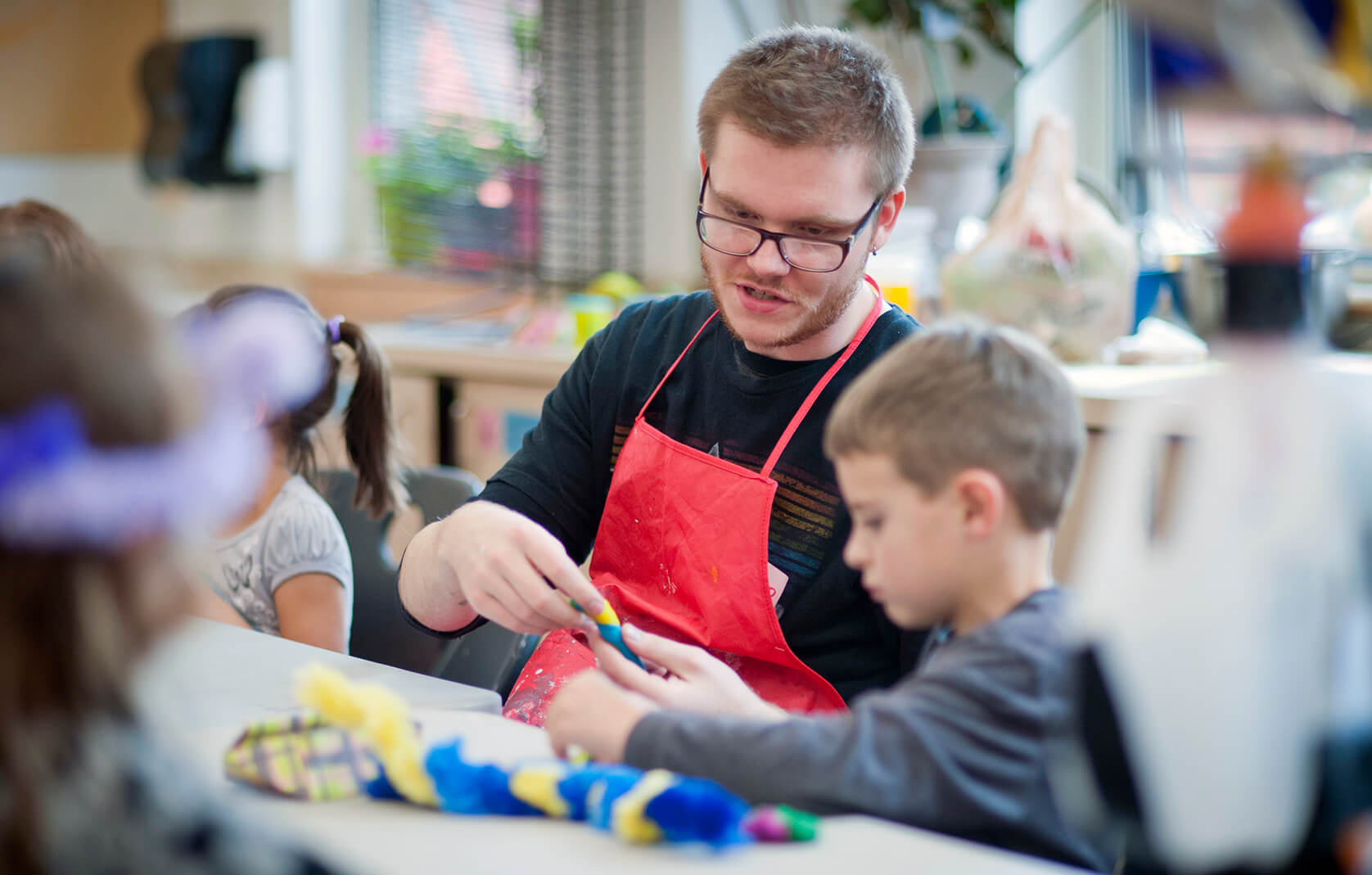
Art education is a vital component of the curriculum for all students, including those with special needs. The creative processes involved in art can offer numerous educational, emotional, and social benefits, making it an invaluable tool for special needs education. This article explores the strategies for effectively Janine Sytsma integrating art education for special needs students and highlights the myriad benefits it provides.
The importance of Art Education for Special Needs Students
Art education can be particularly beneficial for special needs students as it provides a unique means of expression and communication that may not be available through other subjects. The benefits of art education for special needs students include:
Enhanced Motor Skills: Art activities such as drawing, painting, and sculpting can help improve fine motor skills and hand-eye coordination.
Improved Cognitive Function: Engaging in art can stimulate cognitive processes such as memory, problem-solving, and critical thinking.
Emotional Expression: Art provides a safe outlet for expressing emotions, which can be especially important for students who have difficulty verbalizing their feelings.
Social Skills Development: Collaborative art projects can promote social interaction, teamwork, and communication skills.
Increased Self-Esteem: Completing art projects can give students a sense of accomplishment and boost their confidence.
Strategies for Art Education for Special Needs Students
Effective art education for special needs students requires thoughtful planning and adaptive teaching strategies. Here are several strategies to consider:
- Individualized Instruction
Each student with special needs has unique strengths and challenges. Individualized instruction ensures that art activities are tailored to meet the specific needs and abilities of each student.
Personalized Projects: Design art projects that align with the interests and abilities of each student. For example, a student with limited fine motor skills might work with larger brushes or use sculpting materials that are easier to manipulate.
Flexible Pacing: Allow students to work at their own pace, providing extra time and support as needed to complete their projects.
- Use of Adaptive Tools and Materials
Using adaptive tools and materials can help make art activities more accessible for special needs students.
Modified Art Tools: Provide tools such as ergonomic brushes, adaptive scissors, and easy-grip pencils to accommodate students with physical disabilities.
Variety of Materials: Offer a range of materials such as textured paper, clay, and digital art programs to cater to different sensory preferences and abilities.
- Sensory-Friendly Environment
Creating a sensory-friendly art environment can help students with sensory processing disorders feel more comfortable and engaged.
Calm Atmosphere: Minimize sensory distractions by keeping the classroom environment calm and organized.
Sensory Breaks: Allow students to take sensory breaks if they become overwhelmed. Provide a quiet corner or sensory tools like stress balls and fidget toys.
- Visual and Verbal Supports
Using visual and verbal supports can help students understand instructions and stay focused on their projects.
Visual Schedules: Use visual schedules to outline the steps of an art project, helping students understand what to expect and what comes next.
Demonstrations: Provide clear, step-by-step demonstrations of art techniques and processes. Use visual aids such as diagrams and examples.
- Encouraging Self-Expression
Encouraging self-expression through art can help special needs students communicate their thoughts and feelings in a non-verbal way.
Open-Ended Projects: Offer open-ended art projects that allow students to explore and express their creativity without the pressure of a specific outcome.
Emotional Themes: Incorporate themes that encourage students to explore and express their emotions, such as creating art about their favorite memories or their hopes and dreams.
- Collaborative Projects
Collaborative art projects can help special needs students develop social skills and a sense of belonging.
Group Art Projects: Organize group projects where students work together to create a mural, sculpture, or installation. Ensure that each student has a role that matches their abilities.
Peer Partnerships: Pair special needs students with peers for collaborative activities. This can foster peer relationships and provide social learning opportunities.
Benefits of Art Education for Special Needs Students
Implementing art education strategies for special needs students can yield numerous benefits, including:
- Enhanced Communication Skills
Art can serve as an alternative communication method for students who struggle with verbal expression. Visual art, music, and dance offer non-verbal ways to convey thoughts and emotions, helping students express themselves more fully.
- Improved Emotional Well-Being
Creating art can be therapeutic, helping students manage stress, anxiety, and other emotional challenges. The process of making art can be calming and provide a sense of accomplishment and self-worth.
- Strengthened Social Connections
Participating in group art projects and collaborative activities can help special needs students develop social skills, build friendships, and feel more connected to their peers.
- Cognitive and Academic Growth
Art education can enhance cognitive development by stimulating critical thinking, problem-solving, and memory. Additionally, integrating art with other subjects can reinforce academic concepts and make learning more engaging.
- Boosted Confidence and Self-Esteem
Successfully completing art projects can boost students’ confidence and self-esteem. Displaying their artwork in the classroom or school can give them a sense of pride and validation.
- Enhanced Motor Skills
Art activities that involve fine motor skills, such as drawing, painting, and sculpting, can help improve dexterity and coordination. This can be particularly beneficial for students with physical disabilities or developmental delays.
Conclusion
Art education offers a wealth of benefits for special needs students, from enhancing cognitive and motor skills to improving emotional well-being and social connections. By implementing individualized instruction, using adaptive tools, creating a sensory-friendly environment, and encouraging self-expression and collaboration, educators can create a supportive and inclusive art education experience for all students. Embracing the unique abilities and perspectives of special needs students through art not only enriches their educational experience but also fosters a more inclusive and compassionate learning community.
Be First to Comment